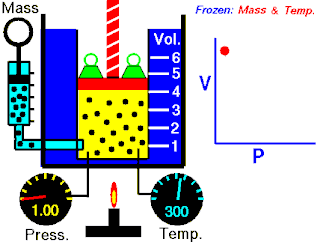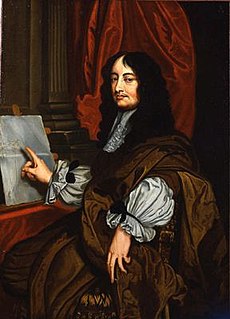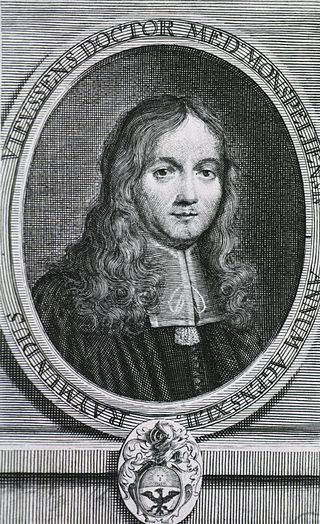Related Research Articles

1620 (MDCXX) was a leap year starting on Wednesday of the Gregorian calendar and a leap year starting on Saturday of the Julian calendar, the 1620th year of the Common Era (CE) and Anno Domini (AD) designations, the 620th year of the 2nd millennium, the 20th year of the 17th century, and the 1st year of the 1620s decade. As of the start of 1620, the Gregorian calendar was 10 days ahead of the Julian calendar, which remained in localized use until 1923.

Boyle's law, also referred to as the Boyle–Mariotte law, or Mariotte's law, is an experimental gas law that describes the relationship between pressure and volume of a confined gas. Boyle's law has been stated as:
The absolute pressure exerted by a given mass of an ideal gas is inversely proportional to the volume it occupies if the temperature and amount of gas remain unchanged within a closed system.
The year 1927 in science and technology involved some significant events, listed below.
The year 1926 in science and technology involved some significant events, listed below.
The year 1715 in science and technology involved some significant events.
The year 1713 in science and technology involved some significant events.
The year 1705 in science and technology involved some significant events.
The year 1660 in science and technology involved some significant events.
The year 1685 in science and technology involved some significant events.
The year 1620 in science and technology involved some significant events.

William Brouncker, 2nd Viscount Brouncker, PRS was an Irish born mathematician who introduced Brouncker's formula, and was the first president of the Royal Society. He was also a civil servant, serving as a commissioner of the Royal Navy. He was a friend and colleague of Samuel Pepys, and features prominently in the Great Diary.
William Brouncker may refer to:

Viscount Brouncker, of Lyons in the Province of Leinster, was a title in the Peerage of Ireland. It was created on 12 September 1645 for the courtier Sir William Brouncker. He was made Baron Brouncker, of Newcastle in the Province of Munster, at the same time, also in the Peerage of Ireland. He was succeeded by his eldest son William, the second Viscount. William was a distinguished mathematician, who was the first President of the Royal Society and also held political office. He was unmarried and was succeeded by his younger brother Henry, the third Viscount. Henry served as Cofferer of the Household between 1680 and 1685, but was universally detested as being "false, hard and covetous". He was childless and the titles became extinct on his death in 1688.

Henry Brouncker, 3rd Viscount Brouncker was a Restoration-era medical doctor, courtier, politician, and civil servant. He served as Cofferer of the Household to Charles II, and served as Gentleman of the Bedchamber to James, Duke of York. He was a member of parliament and a very skilled games player.

Castlelyons is a small village in the east of County Cork, Ireland. It is also a civil parish in the barony of Barrymore. The name is derived from a stronghold of the Uí Liatháin - an early medieval kingdom. It is situated 6 km (3.7 mi) south of Fermoy. In the 2016 census it recorded a population of 374. Castlelyons is part of the Cork East Dáil constituency.
Johann Conrad Peyer was a Swiss anatomist who was a native of Schaffhausen.

Raymond Vieussens was a French anatomist from Le Vigan. There is uncertainty regarding the exact year of Vieussens birth, with some sources placing it as late as 1641.
The post of Lord President of Munster was the most important office in the English government of the Irish province of Munster from its introduction in the Elizabethan era for a century, to 1672, a period including the Desmond Rebellions in Munster, the Nine Years' War, and the Irish Rebellion of 1641. The Lord President was subject to the chief governor, but had full authority within the province, extending to civil, criminal and church legal matters, the imposition of martial law, official appointments, and command of military forces. Some appointments to military governor of Munster were not accompanied by the status of President. The width of his powers led to frequent clashes with the longer established courts, and in 1622 he was warned sharply not to "intermeddle" with cases which were properly the business of those courts. He was assisted by a Council whose members included the Chief Justice of Munster, another justice and the Attorney General for the Province. By 1620 his council was permanently based in Limerick.
Thomas Branker (Brancker) (1633–1676) was an English mathematician.
Sir Thomas Cademan (1590?–1651) was an English recusant physician.
References
- ↑ Vergani, Francesco; Morris, Christopher M.; Mitchell, Patrick; Duffau, Hugues (December 2012). "Raymond de Vieussens and his contribution to the study of white matter anatomy". Journal of Neurosurgery. 117 (6): 1070–1075. doi:10.3171/2012.8.JNS12387.